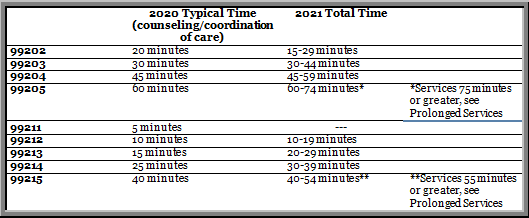 Featured coffee – Baklava Latte
Featured coffee – Baklava Latte
A coder asked how she should determine what’s medically necessary for an evaluation and management service and how she should explain the rationale to her physicians.
Well, we know, according to CMS IOM Publication 100-04, Chapter 12 Sec. 30.6 E/M Services Codes, “Medical necessity of a service is the overarching criterion for payment in addition to the individual requirements of a CPT code. It would not be medically necessary or appropriate to bill a higher level of evaluation and management service when a lower level of service is warranted. The volume of documentation should not be the primary influence upon which a specific level of service is billed.”
We all quote this guideline, but how do we explain it to a clinician? This does not advise a coder how to determine medical necessity, and each time we quote this guideline, we are challenged by practitioners to cite a source that documents what is “medically necessary” to treat the patients’ complaints.
Non-clinical coders are hesitant to downcode an evaluation and management service because we don’t possess the clinical knowledge to determine what is medically necessary to treat patients, and CMS’ guideline does not provide sufficient detail for a discussion with the providers.
As a result, let’s look further.
According to CMS’ Evaluation and Management Services Guide, “The documentation of each patient encounter should include Reason for the encounter and relevant history, physical examination findings, and prior diagnostic test results.”
What stands out to me in this statement is “relevant.”
Also, in the document, “When billing for a patient’s visit, select codes that best represent the services furnished during the visit. A billing specialist or alternate source may review the provider’s documented services before submitting the claim to a payer. These reviewers may help select codes that best reflect the provider’s furnished services. However, the provider must ensure that the submitted claim accurately reflects the services provided. The provider must ensure that medical record documentation supports the level of service reported to a payer. You should not use the volume of documentation to determine which specific level of service to bill. Services must meet specific medical necessity requirements in the statute, regulations, and manuals and specific medical necessity criteria defined by National Coverage Determinations and Local Coverage Determinations (if any exist for the service reported on the claim). For every service billed, you must indicate the specific sign, symptom, or patient complaint that makes the service reasonable and necessary.”
Any provider can use a template, check off every box, and document a comprehensive history and exam, but is it relevant to the reason for the encounter?
For example, the provider documented Comprehensive History and Examination for a 21-year-old otherwise healthy male established patient who presented for a complaint of ankle pain after running a marathon.
It’s simple to abstract four HPI elements, but let’s go to the documented Complete Review of Systems.
Ask your provider if it is relevant to the presenting problem. This is where your knowledge of anatomy, physiology, and disease process comes in when you have the discussion. You’re not questioning the quality of care that the physician is providing to the patient (you’re not qualified), you’re asking if it’s relevant to the presenting problem for coding – based upon guidance from CMS.
Is it pertinent to the presenting problem to abstract review of Eyes, Ears, Nose, Mouth, Throat, Cardiovascular, Respiratory, Gastrointestinal, Genitourinary, Psychiatric, or Endocrine? Or that all others are negative (if allowed by your Fiscal Intermediary)?
Is it pertinent to the presenting problem to abstract that both parents are alive and well for Family History?
Is it pertinent to the presenting problem to abstract that the patient is a single college student for Social History?
That Comprehensive history is now detailed. Let’s look at the Comprehensive 1995 Exam.
Is it pertinent to the presenting problem to abstract examination of body areas: Head, including the face; Neck; Chest including breasts and axillae; Abdomen; Genitalia, groin, buttocks; Back, including spine?
Is it pertinent to the presenting problem to abstract examination of organ systems: Eyes; Ears, nose, mouth, and throat; Cardiovascular; Respiratory; Gastrointestinal; Genitourinary; or Psychiatric?
For coding purposes, we no longer have a Comprehensive Exam.
Therefore, the way to approach your physicians is to not discuss what is or is not medically necessary. Remember, we’re not treating the patients, and we’re not qualified to assess that quality of care.
Focus on what is relevant for coding the level of service based upon the above guidance from CMS.
 Featured coffee –Tiramisu
Featured coffee –Tiramisu
 Featured coffee –
Featured coffee –
 Featured coffee –
Featured coffee –